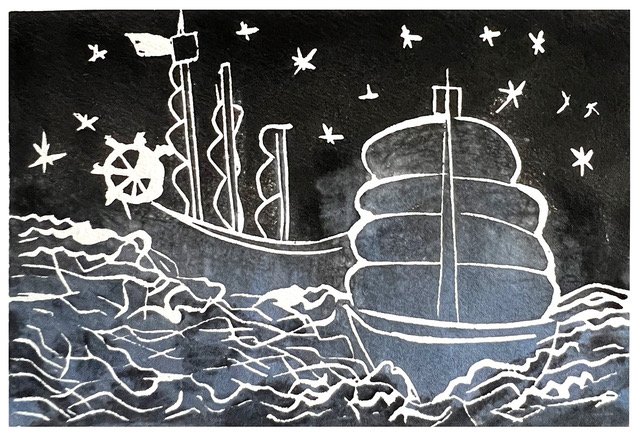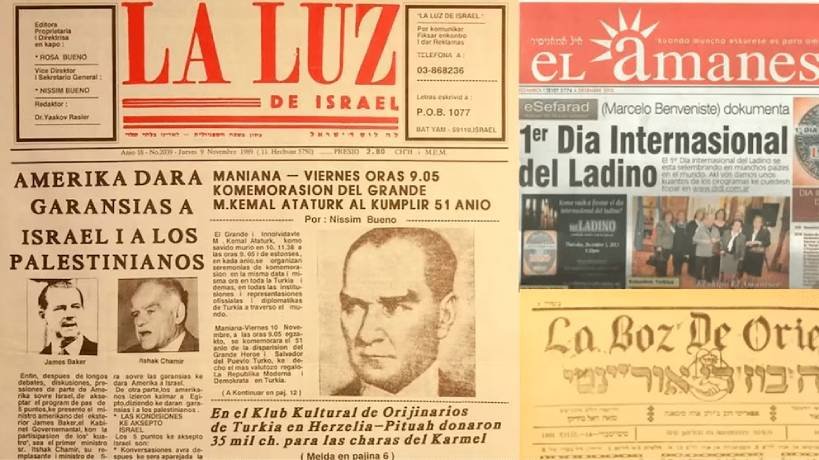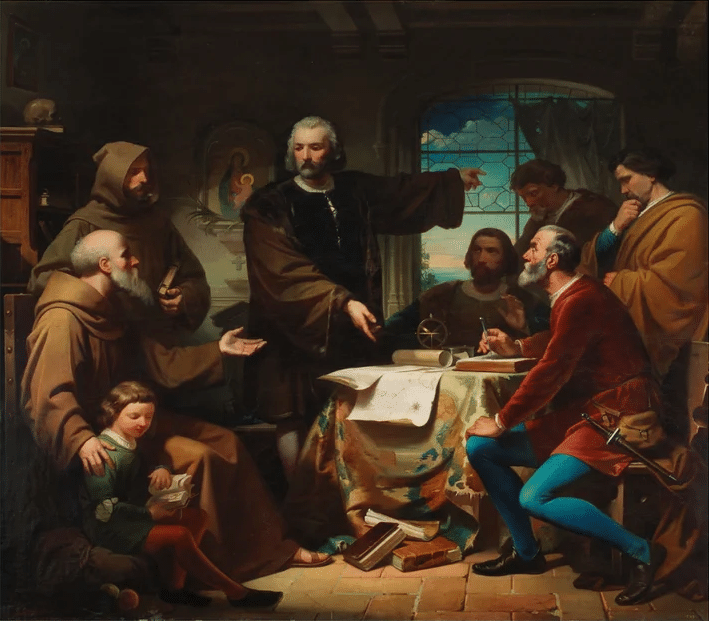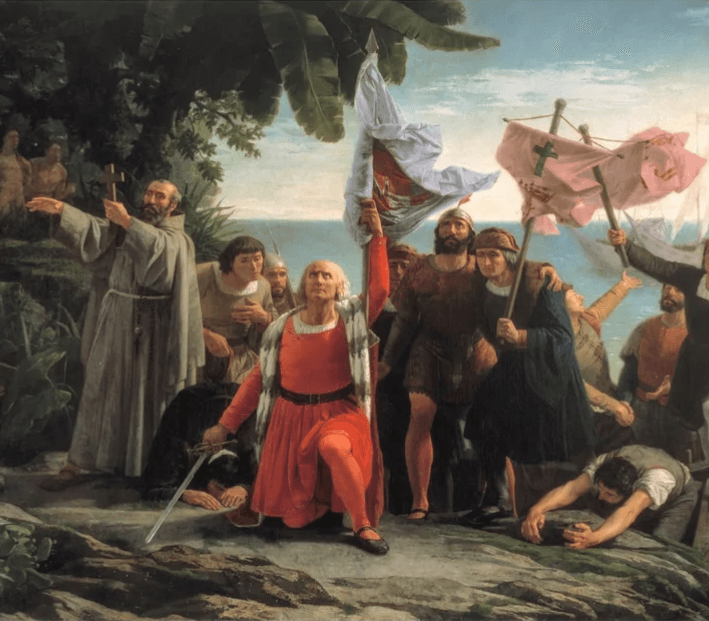
Was Christopher Columbus Jewish and did he speak Judeo-Spanish (Ladino)?
By Jana Mazurkiewicz Meisarosh, German Bernate Obando, and Kathyn Gainor
Regardless of your stance on Columbus Day, recent news shed light on a fascinating possibility: Christopher Columbus, traditionally hailed as Italian, might have had Sephardic Jewish heritage.
Although it is too early to make a definite conclusion at this point, Spanish scientists, after a 22-year controversial investigation, analyzed DNA from Columbus’s remains and found genetic markers that may be consistent with Jewish ancestry. This aligns with theories suggesting Columbus belonged to the Sephardic Jewish diaspora, a community ruthlessly persecuted in Spain, and facing numerous pogroms. The expulsion, spearheaded by King Ferdinand and Queen Isabella, the Catholic monarchs, forced Jews to convert or flee in 1492 – the very year Columbus embarked on his voyage to India, but which brought him instead to the Americas.
This finding compels us to consider a captivating question: Did Columbus, along with his crew, speak Ladino, a Sephardic Jewish language?
Ladino: A Legacy Enduring
Ladino, also known as Judeo-Spanish, originated from a very archaic form of Castilian Spanish and was spoken by Spanish Jews before their expulsion in 1492. Forced to find new homes, these communities carried their language to places like Turkey, Greece, and North Africa. Although Ladino language is near extinct today, it used to thrive within the Sephardic communities of these people living mostly in Israel, Greece, Spain, the Balkans, the Americas, North Africa, and Turkey.
Sharing similarities with late 15th-century Spanish, over time Ladino adopted words from languages like Turkish, Greek, and Arabic, reflecting the diverse paths of the Sephardic diaspora.
Ladino was an integral part of their rich cultural identity and expression, being present in songs (“romanzas sefardìes”), liturgy, holiday celebrations, poems and proverbs (“dichos”). Similarly to the Yiddish language, various organizations are now attempting to revive Ladino, and prevent its complete extinction.

Embrace the Tapestry of History with Ladino
Yiddish Arts and Academics Association of North America (YAAANA) remains committed to preserving Sephardic heritage through launching a new project called Ladinoland, and offering engaging Ladino classes led by the renowned scholar Dr. Agnieszka August-Zarębska.These classes are a truly unique opportunity to study Ladino comprehensively, encompassing vocabulary, grammar, conversation, reading, and the Rashi script.
Let’s delve deeper into the vibrant tapestry of Sephardic culture, including the captivating language of Ladino, potentially spoken by influential figures like Christopher Columbus himself.

Learn More about Ladino Classes offered by YAAANA at:
References
https://www.nbcnews.com/news/world/columbus-was-sephardic-jew-western-europe-study-finds-rcna175188
https://amp.elmundo.es/cultura/2024/10/13/670b0757fc6c83ac6b8b4582.html
https://www.ynetespanol.com/tendencias/ciencia-y-tecnologia/article/hj6aght1ke
https://yiddishlandcalifornia.org/ladinoland
https://www.loc.gov/exhibits/1492/columbus.html
https://www.npr.org/2024/10/16/g-s1-28462/christopher-columbus-spanish-jew-documentary
https://www.rtve.es/television/20241010/horario-donde-ver-colon-adn-verdadero-origen/16280367.shtml



It is most likely that Christopher Columbus was a Spanish “Converso” in order to sail on a journey on behalf of King Ferdinand and Queen Isabella of Spain to find the route to India and the rich Spice lands beyond. Among the members of the crew aboard the 3 Ships were no doubt many “conversos” and possibly Jewish “Sephardies” families as well. It is well-known that many cartographers and Astrolab technicians aboard all the ships who sailed on behalf of the Ship Merchants of the Royal Courts of both Spain and Portugal and later the ships of the Dutch East India Company, were Jewish Maritime seamen. One cannot overlook Jewish ancient history to follow the records of King Solomon’s fleet of ships which were built and manned by the Phoenician navigators who trained and engaged Israelite crews to sail the Mediterranean Sea and beyond. Best wishes
Thank you for your comment. We hope that he spoke Ladino at one point as we are trying to teach it! Best wishes to you as well.
I am concerned that this activity to prove that Columbus has Jewish ancestry will lead to even more antisemitism among minorities in America who are already supporting Palestinians. We are experiencing enough antisemitism right now in America and we don’t need it to increase. Suffering and persecution experienced by the Jewish people over the centuries is of little interest to minorities in America. They view us as oppressors, which is absolutely unfair, especially given our support of the civil rights movement.
Thank you for your comment and hopefully not.
This has been thoroughly debunked by historians David M. Perry and Matthew Gabriele (h/t Rebecca Solnit)
“As announced by the BBC, “Famed explorer Christopher Columbus was likely Spanish and Jewish, according to a new genetic study!” Amazing, right? But dig a little and it quickly becomes clear that there’s no evidence here. And by that we mean not only no evidence that he was Jewish, but no evidence that there is actually a study.”
Read the detailed discussion: https://buttondown.com/ModernMedieval/archive/christopher-columbus-was-not-jewish/
Thank you for your comment. We were referencing news articles.
Some excellent YouTube videos by academics. Colomb is a Sephardic name. He sailed on the last day that Isabella ordered Jews to convert or leave. Jewish cartographers, financiers and navigators provided the means
Thank you, always interested in more education.
Let’s not forget that CC was Genoese (and of Genoese ancestry). There probably was a small (?) Jewish community in Genoa, but why would a Jewish Genoese move to Spain just at the time life was becoming precarious there for Jews?